This is a post from reader Stephen Davis. It originally appeared on his his blog City Beautiful.
When you talk about cities and transport, one term that comes up almost immediately is density. It’s a simple idea – how many or few people are in a given place. But it’s notoriously difficult to define, not because it’s hard to measure, but because there are so many possible ways of doing it.
It’s equally hard to visualise or intuitively understand what a given density figure means. What does 2200 people per square kilometre feel like? How does one city compare to another? And so on.
So to give you a feel for what density means in practice, let’s take a look a city you’re probably familiar with if you’re reading this blog, and play with it. Doing some alternative history, what would Auckland look like if it had developed in a denser pattern, or a sparser one? How big or small would it be?
Definitions
First of all, let’s get some numbers. We’re going to look at Auckland as it was in 20131. In order to come up with a figure for how dense it is, I’ve decided to go with the OECD’s definition: contiguous areas with more than 5,000 people at a density of more than 300 people per square kilometre2. I’ll also use this for other New Zealand cities. For the international cities, I’ve gone with the figures on their Wikipedia pages3.
Auckland as it is today
Doing a little GIS magic, we can come up with a figure for Auckland. By this standard, the main urban area of Auckland held 1,282,270 people in an area of 582.2 square kilometres, an average of 2,202 people per square kilometre.
You’ll notice a few things. Some large industrial areas (Penrose, Manukau, East Tamaki) aren’t included. This is because no-one lives there. Internationally, industrial areas are largely the same everywhere. In sparser cities, they’re peppered throughout the metropolitan area. In denser cities, they tend to be on the outskirts or outside the city completely. Either way, they’re not really relevant to the density that matters to most people.
This makes Auckland by far the densest city in New Zealand, and about the same density as Melbourne. Within Auckland, some areas are more or less dense than this, but the most median areas, the most typical, are:
- South Auckland (the former Manukau City Council area) taken as a whole.
- Hillsborough
- Narrow Neck
- Saint Heliers
- Western Springs
1,800
Now let’s see what happens if we make the city a little sparser (less dense). Going down from 2,200 people per square kilometre to 1,800, we get this:
If Auckland were less dense, but had the same number of people, it would of course be bigger4. In this case, it would spread to about Kumeu in the west, and Ardmore in the southeast. This is also about the density you’d find in:
- Brisbane, Australia
- Hamilton
- Hastings
- Wellington
Within Auckland, the areas that are about this density already are
- The North Shore, taken as a whole (the former North Shore City Council, plus the built up areas of Orewa, Silverdale, and Whangaparaoa)
- Green Bay
- Mangere Bridge
- Orakei

1,400
Let’s get sparser still.
Now we’ve filled the Upper Harbour, spread west to Waimauku, and into the lifestyle blocks of the Waitakere ranges as far as the regional park boundary. South, we’ve got to about Runciman, halfway to Pukekohe, and Pukekohe itself has spread out a few kilometres. This is also about the density you’d find in:
- Salt Lake City, Utah, United States
- Christchurch
- Palmerston North
- Dunedin
Or within real-world Auckland:
- Red Hill, Papakura
- Hatfields Beach, north of Orewa
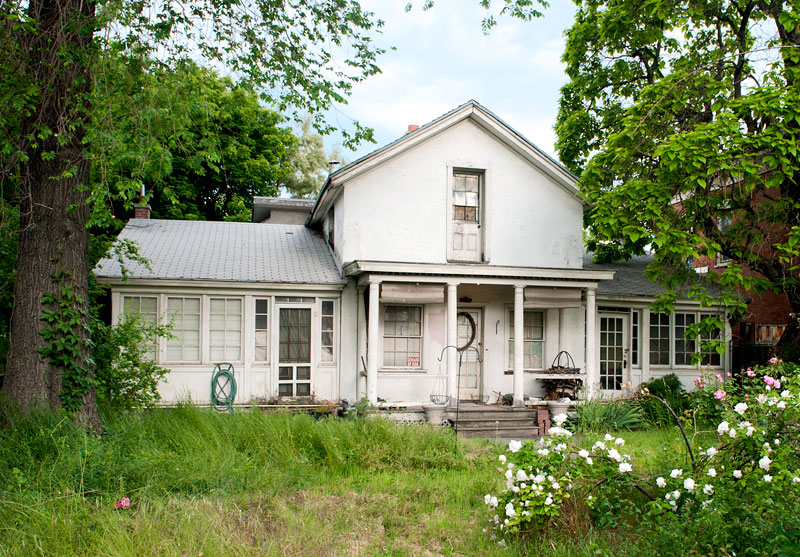
1,150
Let’s get sparser again. Houston is often mentioned by advocates of outward expansion, so what would we look like at a Houstonian 1150 people per square kilometre?
We’ve now filled in Dairy Flat, the lifestyle blocks out as far as Maraetai, and Drury. This is about the density of
- Houston (as mentioned)
- Tauranga
- Rotorua
- Levin
Or within present-day Auckland:
- Greenhithe
- Tuakau5
- Waiuku

650
How sparse can we go? Let’s take it to the limit. The world’s sparsest city of a size comparable to Auckland is Charlotte, North Carolina, USA. It’s a mere 650 people per square kilometre.
To be this sparse, Auckland would spread to the shores of the Kaipara and through the whole inland area between there and Waiwera. Aside from the (hopefully still protected) Waitakere Ranges, it would spread west to the Tasman sea. It would go southwest to not just Pukekohe but Waiuku and Pokeno.
There are no other large cities as sparse as this. Within New Zealand, this is similar to:
- Stratford
- Marton
- Te Kuiti
All towns of just a few thousand people. Within Auckland, the only area as sparse as this without being completely rural6 is the further reaches of Titirangi.

What about denser?
That’s as sparse as we go. It’s probably also time for a breather. Next time, we’ll see what Auckland would look like if it were not sparser, but denser than it is now. We’ll see Auckland as it would look if it had been built like some famous cities around the world.
Notes
- Tuesday, 5 March 2013 to be precise: census night. Almost all data is from Stats NZ. Place names are from Peter Scott, aerial imagery is from LINZ. ↩
- Strictly speaking, this definition applies to urban areas divided into a regular grid of 1km squares. I’m going to use census area units, because it’s what I have available. They aren’t square, but they are about the same size. ↩
- Generally, for the “urban area” of that city, rather than following political boundaries. These figures are not necessarily comparable to the figures I’ve come up with for Auckland, but they are in the same ballpark, and it’s what we’ve got to go on. In particular, this will be important for densities much greater than present-day Auckland, which we’ll see in part 2. ↩
- I’ve made some fairly arbitrary choices about where we would have sprawled to: generally I’ve avoided hills, already industrial areas and already existing rural towns. Again, this is just to get an idea. ↩
- Not technically part of Auckland Council, but part of what Statistics NZ considers the greater Pukekohe area. ↩
- That is, still over our 300 people per square kilometre threshold to count as urban. ↩
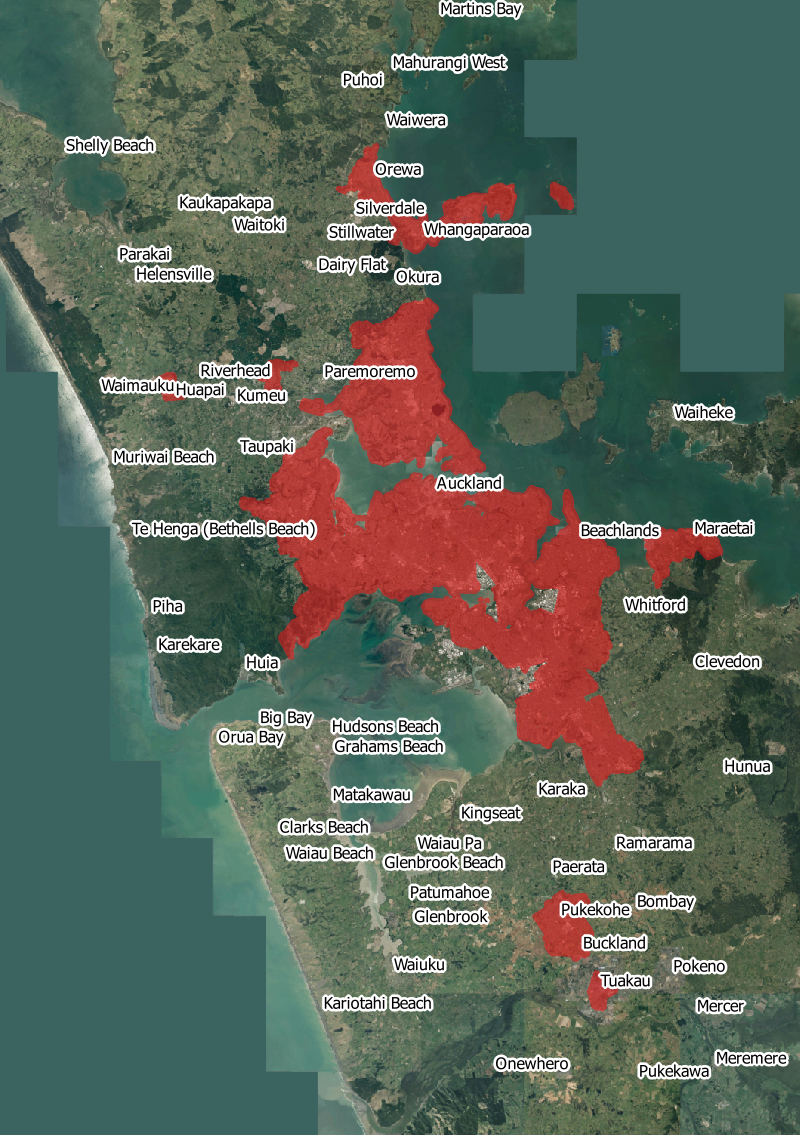
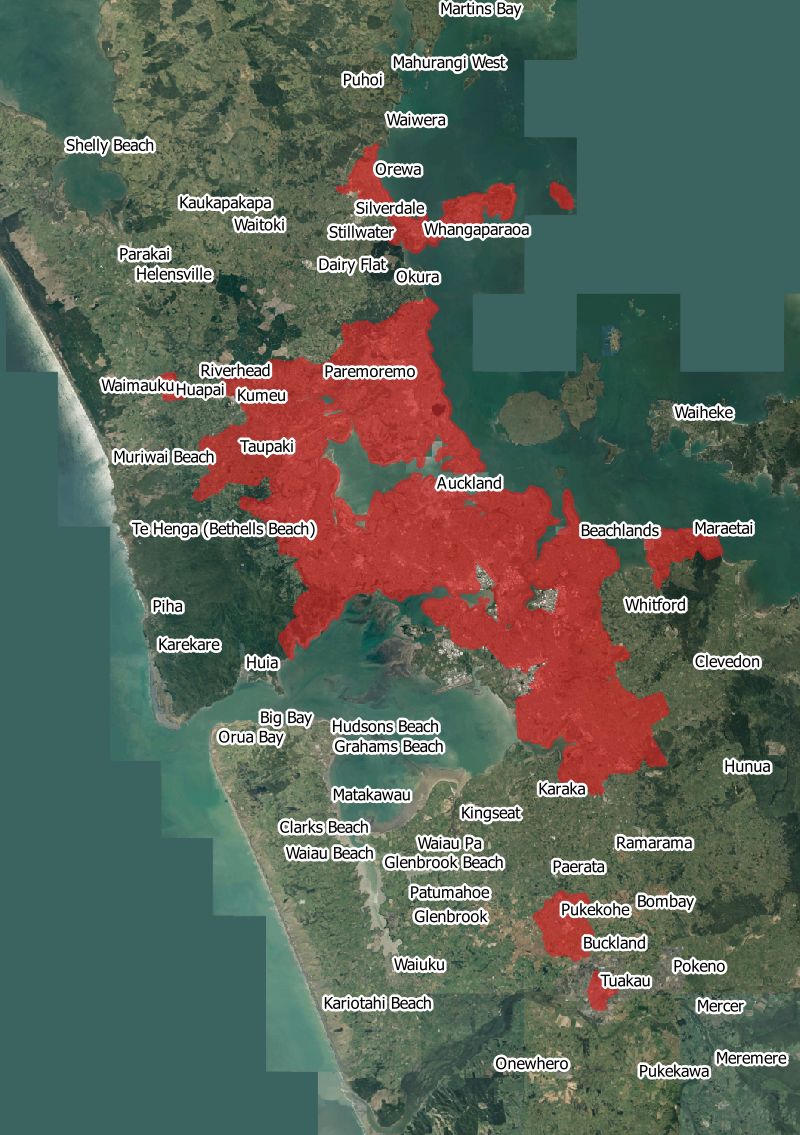
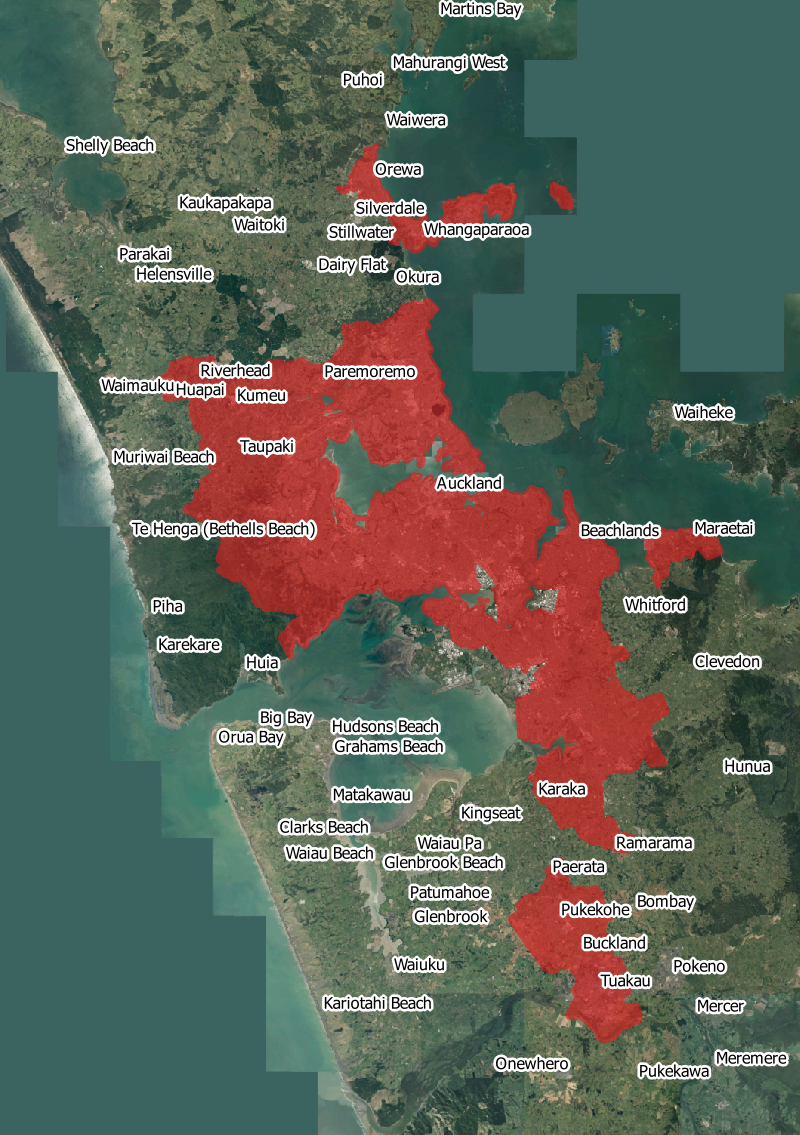
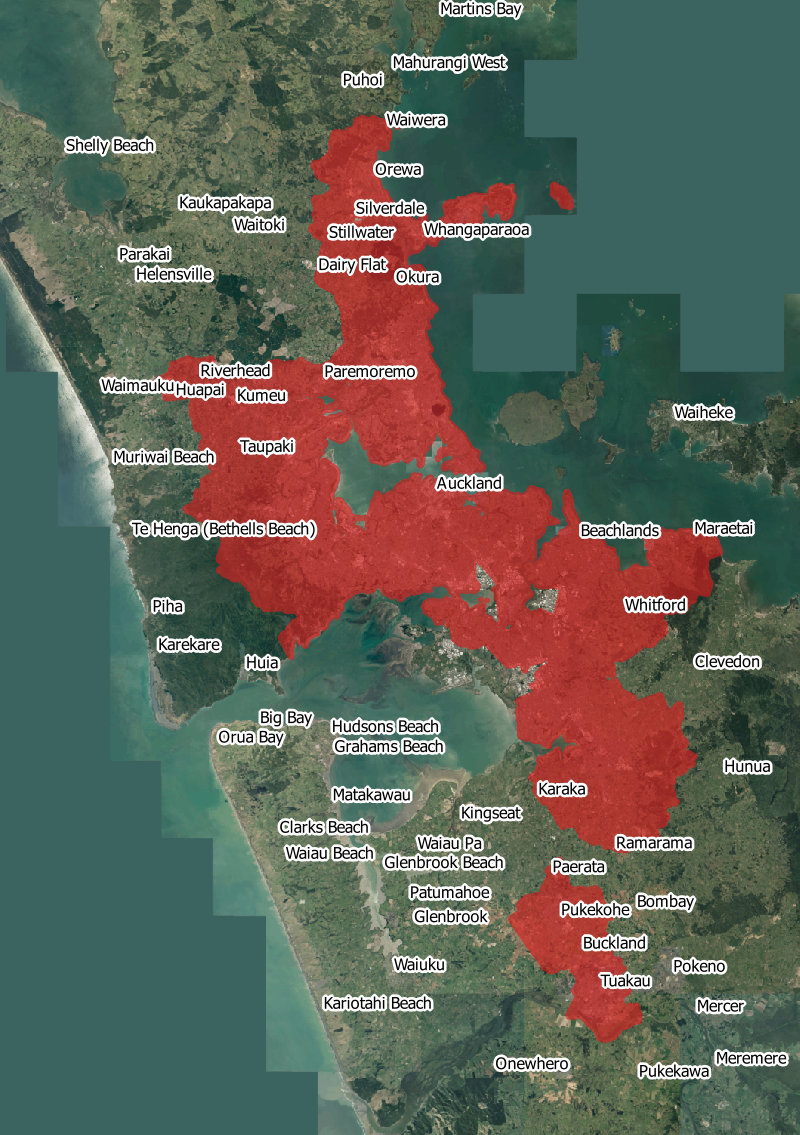


 Processing...
Processing...
Very interesting. I once spent a day in Charlotte about 35 years ago and it seemed fairly pleasant – of course I was visiting for computer software reasons not geographical study. And I usually enjoy Stratford but only because we pass through it frequently when touring the magnificent Taranaki garden festival.
Stephen Davis has politely left the reader to come to his/her own conclusions. Mine is low density can be pleasant if total population is low.
Density – should we be looking at total people or total families? Certainly in my own lifetime family sizes have reduced. Children expect to have a room of their own. Couples with no children expect to have spare bedrooms. 50 years ago my Aunt and Uncle brought up 3 very successful children in a small two bedroom terraced house in Stockport UK that had been condemned as a slum for over 20 years; she told me the previous family (that is about 80 years ago) brought up 21 children in that same property. I tell the story because it still makes my mind boggle and of course it explains how total population can drop while a city is physically expanding. Or beware of historic data. Maybe a similar issue is developing in Auckland as the poor are forced by rental costs into ever smaller properties while the wealthy buy their lifestyle blocks.
Charlotte looks beautiful
Here’s another lovely view of Charlotte: https://www.google.co.nz/maps/@35.1309026,-80.9138661,3a,75y,46.51h,93.99t/data=!3m6!1e1!3m4!1sbD34Ogs8yr6rifMD-EWBYA!2e0!7i13312!8i6656
Charlotte looks beautiful
This looks really nice too.
https://www.google.co.nz/maps/@35.2913692,-80.764022,3a,75y,6.07h,101.44t/data=!3m6!1e1!3m4!1sELtmVvaQLJD28_VUBjOFUA!2e0!7i13312!8i6656
You should get together with Julie Anne Genter and make a video of a Hoyts Cinema at a time when there are no movies on. You could play some sad music to underscore the fact that the bad man provided parking that isn’t used at some times of the day.
Haha. Firstly it wasn’t really the fact it was empty that impressed me, more the shear size and monotony of it.
Secondly, I’d be stoked if parking numbers were decided like Hoyts cinema seats are – we’d all be better off. But unfortunately they’re not. As I suspect you already know.
Oh well, there’s plenty of places in Auckland too where you can get crappy streetview images.
I don’t think you can match the sheer amount of parking though — my impression is that about half the blocks of the central city are taken up by surface parking.
Very interesting thanks. The post and Bob’s comment.
Can we make this into a GIF? Maybe also a side-by-side GIF with the example locations on the right.
Your comparison with other NZ cities seems wildly off, I suspect because you haven’t applied the same methodology to them as you have to Auckland. For example, with your method the urban area of Palmerston North is approximately 31sqkm, with a population of roughly 80,000 in that area, meaning a density of ~2500/sqkm.
How come western Waiheke island doesn‘t seem to be included? Whereas Kawau Island is?
Maybe Stephen has advanced knowledge of the result of the Local Government Commission’s decision on Waiheke’s application for Unitary Authority status.
(http://www.lgc.govt.nz/the-reorganisation-process/reorganisation-current-applications/view/waiheke-application/?step=12)
The announcement is due this afternoon.
I’ve got my fingers crossed that Waiheke is approved to go independent with Whakanewha Regional Park remaining owned by Auckland Council and Waiheke covering it’s costs based on what proportion of users are Waiheke residents.
…and the announcement was: NO to the application (http://www.lgc.govt.nz/the-reorganisation-process/reorganisation-current-applications/view/waiheke-application/?step=main)
That’s a pity – democracy undone by a typically Wellington attitude of one size fits all and we know what’s good for you. It’s like Steven Joyce never left.
Mainly teething problems of the super city if you ask me.
Probably because it doesn’t come into the definition of urban that he is using
https://en.wikipedia.org/wiki/Waiheke_Island has 103.5 people per km2
Actually Kawau is not even on his maps – it’s higher north ;), but I’m guess statistic blimps/averaging and that fact that Tiritiri Matangi Island is closer to a more dense bit of the mainland?
There’s a very dense bird population on Tiritiri 🙂
Or I should probably say dense population of birds, since I’m not wishing to disparage the intelligence of our feathered friends…
Does anyone have figures for the population density of the part of Waiheke that is inside the rural-urban boundary? (Or separately for Oneroa, Surfdale, Ostend, Onetangi, and Rocky Bay?)
Not official figures, but a quick bit of GIS just now with data available to hand suggests these figures:
Locality, Pop16Est, SQKM, Pop Per SQKM
Omiha 433, 6.0, 72.6
Oneroa 2479, 133.3, 18.6
Onetangi 670, 33.2, 20.2
Ostend 1904 , 85.4, 22.3
Palm Beach 260, 2.3, 110.9
Surfdale 2050, 27.9, 73.4
Total 7796, 288.2
Sorry for formatting
Further apologies, something went screwy with the SQKM totals. This should be better:
Locality, Pop16Est, SQKM, Pop Per SQKM
Omiha 433, 0.74541, 580.9
Oneroa 2479, 5.79, 427.6
Onetangi 670, 2.76, 242.0
Ostend 1904, 4.06, 468.1
Palm Beach 260, 0.78, 332.6
Surfdale 2050, 2.53, 807.7
Total 7796, 5.79
Thank you James!
(NB I saw the correction below, but there’s no reply link to click there)
I think the comparison for density for the whole city would be misleading.
For example Melbourne has very high density around the core, but very suburban outside.
Hong Kong would have higher density near train station than Tokyo, but Tokyo would have even density in the whole city.
Best way is to compare the core against core, and suburb against suburb.
OUTRAGE, ANGER Why is Tuakau in red and not Waiuku? We are bigger and they are in Waikato. Not that I am biased.
I have stayed in Charlotte a couple of times as parents in law live there. Felt like a different country from Boston and New York. Did walk to local shops but no footpath on either side of main suburban road. Place is flatter than Hamilton. Generally was pretty disoriented when driven around as no landmarks to work from.Was about 3 miles to nearest pub.
After that comment about the pubs I rescind my remark about Charlotte seeming pleasant.
We occupy 54 square metres, in a seven level block, so with some colourful mathematics, I think we are at about 375,000 per square kilometre (assuming apartments above and below us share our triple occupancy). I have lived like this for six years now. Let’s intensify this ramble!
Here in the King Country I think it’s 13.7 people per square kilometre. I’m on a quarter acre and it’s very peaceful. The houses either side of me are both vacant (the town has a house surplus).
If you think about it, it’s a little silly that New Zealand should even have any overcrowded places, as overcrowding can only possibly happen in a land of abundant open space through very poor planning.
Or because there is a big chunk of the population who like living at high densities as they find it interesting and diverse. And also because people like to have jobs and the jobs are in the dense cities.
How have you not understood this yet? Not every one wants to live in the middle of nowhere as you have chosen to do.
I frankly couldn’t think of anything worse than the situation you have described where you live. But the last thing I want to do is stop you doing it.
Yet, people turn down jobs in Taumarunui that are paying $150,000. Says a lot about people’s desire for isolated towns with a housing surplus.
I agree with your comment about the silliness of it. People without homes in Auckland are probably just wanting a chance at a decent life. Somewhere along the way most opportunities for a simple lifestyle in a small town dried up… Something to do with seasonal worker schemes? Or maybe media encouraging the expectation of something better, always better…
What about thinking about the actual built environment in a given area?
The Tokyo municipality which goes across central Tokyo has nearly tripled its built residential space consumption in 55 year. But density has only gone up 33%. I discuss that here in the floorspace is a normal good part of this report. https://medium.com/land-buildings-identity-and-values/successful-cities-understand-spatial-economics-95c272ac04c9